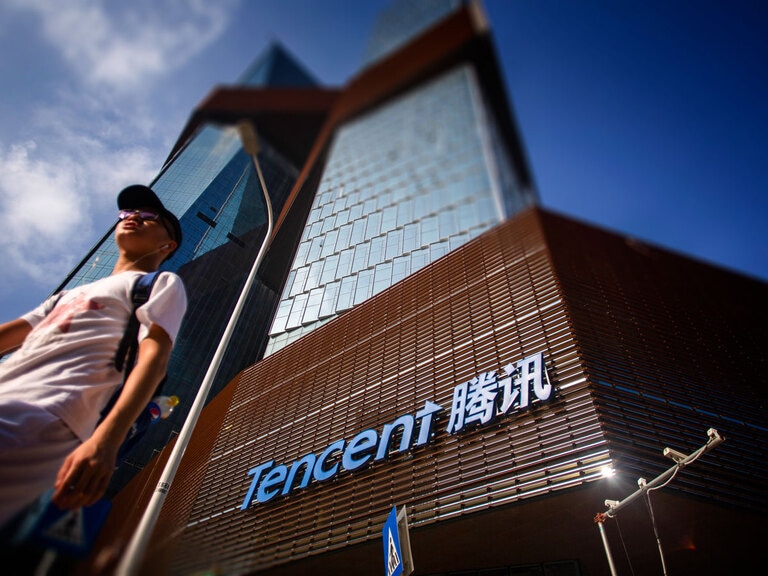Chip making giants tracked by the Invesco Dynamic Semiconductors ETF such as Qualcomm and Nvidia have had a difficult year so far, but efforts to boost capacity and signs of improved demand may help the industry stage a recovery.
Concerns over supply and demand for semiconductors have led to the Invesco Dynamic Semiconductors ETF [PSI] short-circuiting so far this year. The fund, which tracks the performance of 32 US semiconductor manufacturing companies, has seen its price slump 37% from the start of 2022 to $97 at the close on 15 July amid continued supply chain struggles and fears of economic slowdown.
While chip makers have faced difficulties over the past year, key players in the industry are taking steps to expand capacity and there are signs that the outlook is improving. The fund, which tracks the Dynamic Semiconductor Intellidex Index, closed the week ending 15 July 2.2% higher, boosted by positive developments in the global chip making space.
While Samsung [5930.KS] and Taiwan Semiconductor Manufacturing Co [TSM] are not held in the fund, both companies recently reported bumper earnings in Q2, helping to lift Asian chip stocks. STMicroelectronics [STM] and GlobalFoundries [GFS], which has a 2.3% weighting in the ETF, announced plans to build a multi-billion euro chip factory in France. Though the Invesco Dynamic Semiconductors ETF tracks only US-listed semiconductor stocks, the news reflects strong global demand for the industry.
Supply squeeze lifts revenues and earnings
The surge in demand for semiconductors during the coronavirus pandemic led to a supply squeeze in 2021, which has continued into this year and worsened due to lockdowns in China and Russia’s invasion of Ukraine. Ukraine produces half of the world’s neon gas, which is a vital component in semiconductor manufacturing.
Chip manufacturers that benefitted from hiking their prices during the supply squeeze have seen revenues and earnings rise. These companies have also upped production capacities, but a supply glut still remains as demand continues to accelerate. Indeed, the latest figures from the Semiconductor Industry Association (SIA) revealed a 21.1% year-over-year rise in global sales to $50.9bn in April 2022.
However, rising inflation and recessionary fears could be finally putting the brakes on demand for items such as laptops and smartphones as consumers cut their spending.
A recent Reuters report detailed comments from chipmakers Micron Technology [MU] and Advanced Micro Devices [AMD] — which are both top holdings in the fund — signalling waning demand as “red-hot inflation squeezes spending”. Micron forecasted weaker than expected revenues for the current quarter, stating that the market had “weakened considerably in a very short period of time”.
AMD has also flagged a slowdown in PC sales this year as a result of lockdowns in China, with Reuters adding that TSMC, the world's largest contract chipmaker, has seen its major clients cut chip orders for the rest of 2022.
Invesco Dynamic Semiconductor ETF dragged down by holdings
As of 18 July, the Invesco Dynamic Semiconductor ETF has a total daily return of -36.81% and total assets of $516.4m. The fund has 32 holdings, of which Qualcomm [QCOM] has the biggest weighting at 5.67%. It is followed by Nvidia [NVDA] (4.89%), Analog Devices [ADI] (4.87%) and Texas Instruments [TXN] (4.83%).
Leading declines in the fund is the Qualcomm share price, which has plunged around 24% so far this year as of 15 July. This is despite second quarter revenues climbing 41% year-over-year and earnings rising 61%. The company said this was helped by demand for “wireless and high-performance, low power processor technologies across multiple industries”.
The Texas Instruments share price is also down 17% so far this year, despite a 14% hike in first quarter revenues, driven by growth in industrial and automotive demand. It also broke ground on its new 300mm semiconductor wafer fabrication plants in Texas, part of its “commitment to expanding its internal manufacturing capacity for the long term”.
Increased capacity amid persisting chip shortage
Such expansion is of interest to John Neuffer, SIA president and CEO. He recently said: “High global chip demand will necessitate more semiconductor research, design and manufacturing in the years ahead, and we urge leaders in Washington to enact innovation and competitiveness legislation that ensures more of this chip production and innovation occurs on US shores.”
This refers to the $52bn CHIPS Act, which is aimed at boosting US semiconductor production reducing reliance on overseas supply. However, despite being passed by the House and Senate 18 months ago, it is still to see the light of day.
That matters if US manufacturers — and the Invesco Dynamic Semiconductors ETF — want to keep pace with rivals, given that China plans to spend $150bn on expanding its semiconductor industry, Taiwan $120bn and the EU $47bn.
As we wait for these plans to come to fruition, advisory firm Forrester forecasts that the global chip shortage will continue through this year and into 2023.
However, manufacturers remain optimistic. Micron said it remained confident of long-term demand for its chips. Sweta Jaiswal of Zacks agrees: “The growing adoption of cloud computing and the ongoing infusion of artificial intelligence, machine learning and IoT are expected to create solid opportunities in 2022. Moreover, the revolutionary 5G platform is expected to act as a major catalyst for semiconductor revenues in the mobile phone market.”
Continue reading for FREE
- Includes free newsletter updates, unsubscribe anytime. Privacy policy





